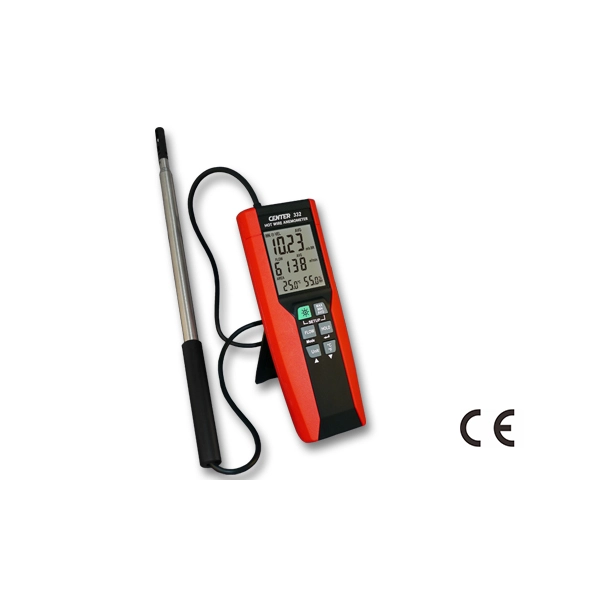Picking the Right Anemometer: A Comprehensive Buying Guide
Picking the Right Anemometer: A Comprehensive Buying Guide
Blog Article
All You Need to Know Concerning Anemometers: Just How They Work, Why They Issue, and Where to Utilize Them
Anemometers, though usually overlooked in the world of clinical tools, play a vital role in various fields, using valuable insights into wind speed and air flow patterns. As we dive right into the ins and outs of anemometer innovation, we will discover the inner functions of these gadgets, their value, and the crucial considerations when selecting the ideal anemometer for particular applications.

Anemometer Essentials
An important instrument made use of to determine wind speed and instructions, the anemometer plays a vital function in weather forecasting and different industries. An anemometer commonly consists of 3 or four mugs that rotate in the wind, a vane that directs into the wind, and sensing units to track the movements or turnings.
There are different types of anemometers readily available, consisting of cup anemometers, vane anemometers, hot-wire anemometers, and sonic anemometers, each with its one-of-a-kind attributes and applications. Mug anemometers are commonly made use of for standard wind speed measurements, while vane anemometers are chosen for directional measurements. Hot-wire anemometers are ideal for low airspeeds, and sonic anemometers are ideal for high-precision measurements in research and commercial settings. Recognizing the essentials of anemometers is necessary for precise wind information collection and analysis across different industries.
Principles of Anemometer Operation
Building on the foundational understanding of anemometer basics, the concepts of anemometer operation elucidate the mechanics behind wind speed and direction dimensions. Cup anemometers, for circumstances, have 3 or more mugs that catch the wind, causing them to rotate quicker as the wind speed rises. Hot-wire anemometers depend on a heated cord that cools down as wind passes over it, with the rate of cooling down figuring out the wind rate.
Value of Anemometers
Anemometers play a critical duty in gauging wind rate and direction, providing important data for weather condition forecasting, climate research studies, environmental monitoring, and aviation operations. Meteorologists rely on anemometers to gather precise wind information, aiding them understand weather condition patterns, anticipate storms, and concern prompt warnings to the public. Wind farm operators make use of anemometers to assess wind problems and maximize electrical power production from wind generators.
Applications Throughout Different Industries
Applications of anemometers cover across varied sectors, showcasing their flexibility and investigate this site utility beyond meteorology. In the renewable resource market, anemometers play a crucial role in assessing wind conditions for wind ranch placements, ensuring optimal power manufacturing. Industries like building and mining utilize anemometers to monitor wind rates, crucial for safety and security methods, specifically when working at elevations or in open-pit mines where solid winds can present threats. Anemometers are likewise indispensable in the aeronautics market, helping pilots in recognizing airspeed and wind direction for safe take-offs and touchdowns. The maritime Look At This market benefits from anemometers for ship navigating, helping sailors anticipate weather adjustments and change courses as necessary. In farming, anemometers assist farmers in taking care of crop splashing by offering real-time information on wind speed to avoid drift. Anemometers discover applications in Heating and cooling systems to maximize air movement and improve energy performance in buildings. The diverse use situations of anemometers highlight their relevance across various industries, highlighting their important role in enhancing operational safety and effectiveness (anemometer).

Selecting the Right Anemometer for Your Demands
For basic purposes, a cup anemometer is appropriate for determining wind rate, while a vane anemometer supplies wind instructions data. try these out Hot-wire anemometers are suitable for low airspeed measurements, and ultrasonic anemometers use high precision and longevity.

Verdict
In verdict, anemometers play a crucial role in determining wind rate and direction across numerous industries. It is crucial to think about the value of anemometers in order to make educated decisions when choosing the most appropriate tool for determining wind problems.
There are different types of anemometers readily available, consisting of mug anemometers, vane anemometers, hot-wire anemometers, and sonic anemometers, each with its distinct functions and applications. Cup anemometers are typically utilized for fundamental wind speed measurements, while vane anemometers are preferred for directional measurements. Hot-wire anemometers are ideal for low airspeeds, and sonic anemometers are ideal for high-precision measurements in research study and industrial settings.Structure on the fundamental understanding of anemometer fundamentals, the concepts of anemometer procedure illuminate the mechanics behind wind speed and direction dimensions. For basic functions, a mug anemometer is ideal for measuring wind rate, while a vane anemometer provides wind direction information.
Report this page